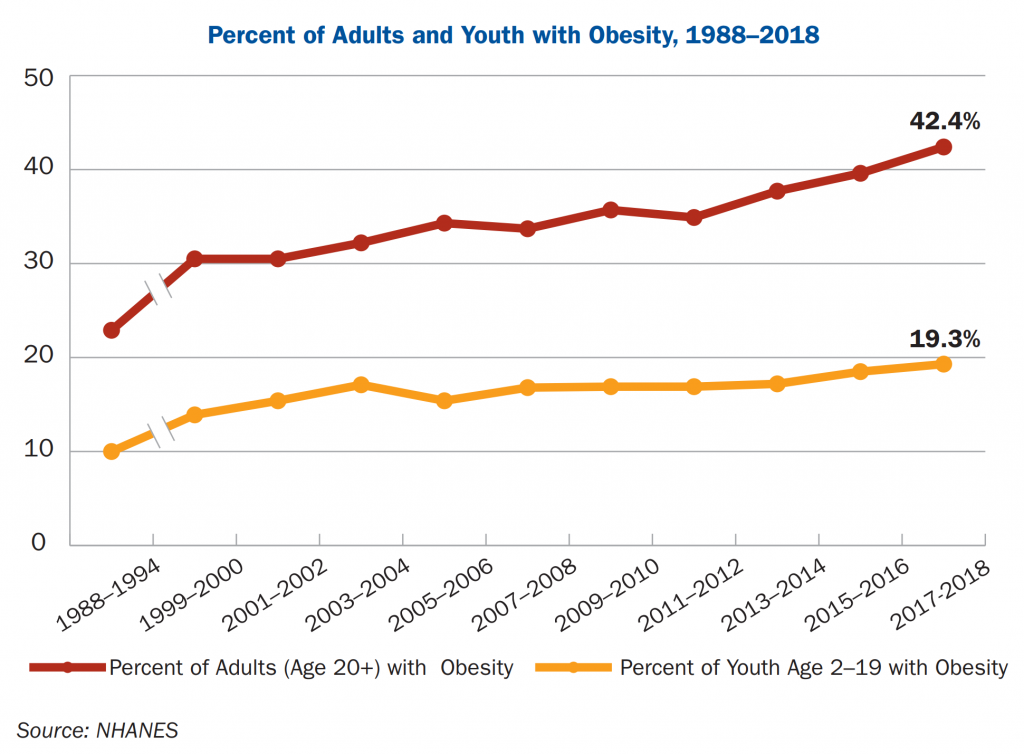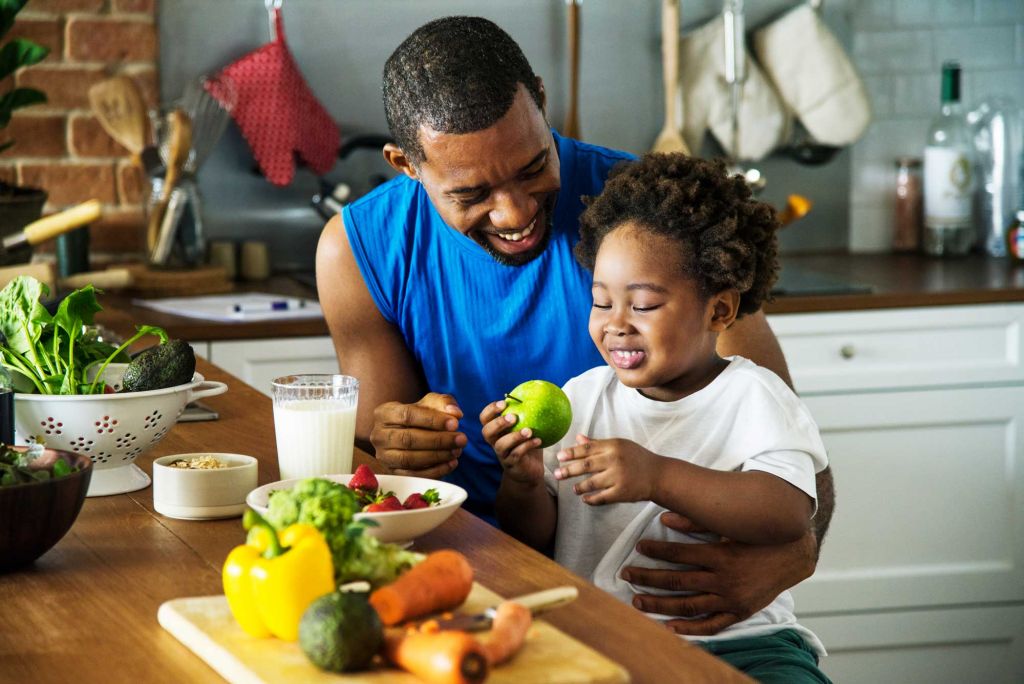A Growing Obesity Crisis
42% of U.S. adults are obese. If you include those who are either overweight or obese, the number climbs to a staggering 73% of U.S. adults. The pandemic lockdowns have made matters worse. In an analysis of 15 million patients in Electronic Medical Record (EMR) systems, 39% of patients have gained weight during the pandemic. Our world has become more and more sedentary, with time formerly spent being active often replaced by the familiar sight of someone hunched over a phone, tablet, or computer screen. And unfortunately people with obesity and conditions like type 2 diabetes are at even higher risk for experiencing severe complications from covid.

Primary and Secondary Prevention to Address Obesity
When setting out to address this health crisis, population health experts look to primary and secondary prevention strategies. Secondary prevention approaches are often the most commonly encountered. An example of this treating someone who is already overweight or obese through methods such as lifestyle change. In secondary prevention, you are trying to treat those already experiencing the issue so you can lower the rate of established cases.
Secondary prevention can have very powerful effects. In a statewide community health program called “Weigh and Win” that incentaHEALTH operates across the state of Colorado, 71% of engaged program participants have lost weight, with a third of them achieving a 5% or greater weight loss sustained for an average of 1.7 years. This is durable behavior change resulting in significant reduction in BMI and disease associated with elevated BMI, such as type 2 diabetes.
One of the positive “halo effects” of secondary prevention efforts like incentaHEALTH is the impact that can extend out to the other family members. When a parent embarks on a journey to improve their nutrition and exercise, it can create a ripple effect throughout the family. If mom or dad starts preparing healthier dinner options, everyone benefits. Kids will eat what’s available in the kitchen, and they will notice what their parents are eating. Even though they won’t admit it, our children are watching us closely and will often follow in our footsteps. Take a closer look at the chart above showing growth in adult and child obesity rates. They generally follow what the adults are doing. This is a bad news when we’re moving in the wrong direction, but good news if we can plot a new, healthier course.
So parents embarking on the journey to Healthy Eating and Active Living (H.E.A.L isn’t that a great acronym?!) are helping create primary prevention in our youth. Back to our mini-course on primary and secondary prevention, primary prevention is focused on decreasing the number of new cases of a disease. That’s our opportunity with parents improving their own health by changing their nutrition and exercise habits in the home, which simultaneously addresses the health of their children. It’s one of the most direct ways to prevent our children from becoming overweight or obese in the future.
5 Actions You Can Take to Create A Positive Change
There are a lot of small actions you can take that have a big impact on the health of you and your family, Here are five ideas to get you started.

- Environmental control: People eat what’s in front of them. Can you swap the bag of chips in the pantry for a bag of pre-washed baby carrots? Or a bowl of grapes? Place them prominently in a location that can’t be missed. It’s amazing to witness the power our environment has over what we eat. Make the healthy choice the easy choice. I can see it in my own kids. Watching that bright bowl of oranges that I placed on the counter slowly disappear puts a smile on my face every time.
- Family dinner with conversation (instead of TV or screens): I know this can be a hard one at the end of a long day when you’re feeling spent and ready to just veg out. But mindless eating is one of the biggest reasons why we eat too much. Or reach for unhealthy foods. Staring at the TV (or your phone) while you eat isn’t just a missed opportunity to check in with your loved ones, it also disconnects you from the meal you’re supposed to be savoring. Try a simple game of “High/Low” where you take turns asking each person at the table what their favorite part of the day was, and what their low point was. Or as my 8 year old daughter called this game “Popsicle and Poopsicle”. It’s hard to start, but once the five of us get going it usually leads to good conversation, some much needed laughs, and less mindless eating.
- Set an example: When I’m feeling a afternoon snack attack, I often tell myself “If you’re not hungry enough to eat an apple, you’re probably not hungry. You’re really just bored.” I often say this out loud if there’s anyone in earshot, but it’s mostly just a reminder to myself. And when my kids are reaching for a bag of chips, I’ll challenge them with the same question. I usually strike a bargain saying they can have the chips if they’re still hungry after that apple. Usually they forgot all about the chips by the time they’re done. That’s one small victory! (I think all that chewing to get the apple down wears them out!)
- Share your health goal: Share that you’re trying to improve how you eat, and ask your kids to help keep you on track. Even though you’re working on yourself, your kids are watching and they might help you keep that promise to yourself. In my own family, I’ve seen curiosity take hold in my kids and they start asking questions about why certain foods are better for you than others. It’s a great dinner conversation starter, especially if you’re not up for the “High/Low” exercise from #2 above.
- Go for a walk: Ask your family to join you for an after dinner stroll. My kids will hop on their bikes or scooters while my wide and I walk. The kids usually groan and moan about having to go, but they end up with smiles on their faces once we’re out the door and moving down the road. The 30 minutes spent enjoying the sunset are small ‘win’ to close out the day (and it’s 30 less minutes in front of a screen for the kids, and myself). Have a dog? Try starting your day with a nice walk with the dog. Feeling really motivated? Bookend your day with an early morning and an evening dog walk. Your body will thank you, and your dog will love you! (And if he’s like my dog, he’ll lick you!)
So pick one of these ideas and start small. And please contact incentaHEALTH if you would like to learn how we can help bring obesity prevention to your population.



